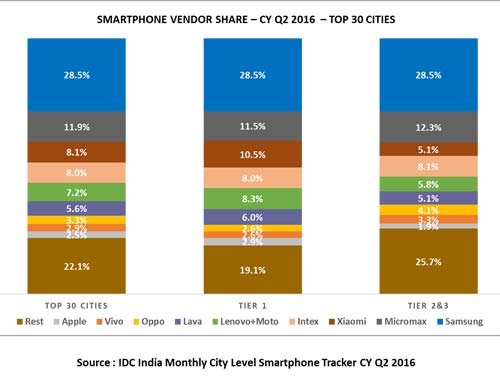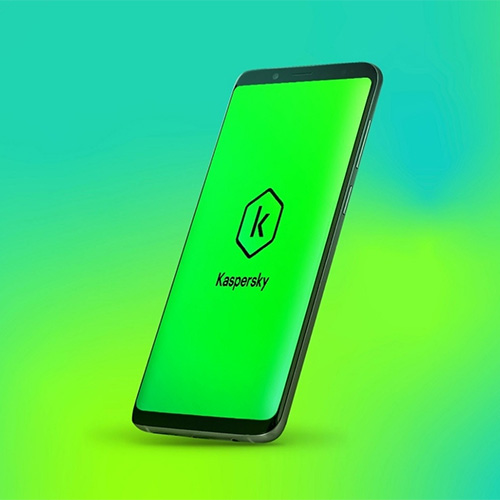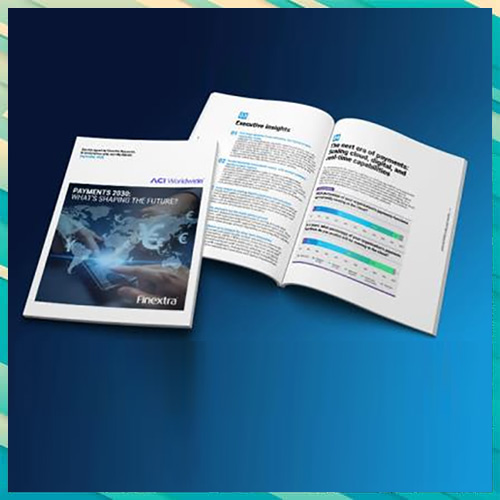
 The demand for smartphone from tier 2 & 3 cities is outgrowing tier 1 cities by clocking more than 12.9 percent growth versus 8.1 percent for the latter according to International Data Corporation's (IDC) Monthly City Level Smartphone tracker.
The demand for smartphone from tier 2 & 3 cities is outgrowing tier 1 cities by clocking more than 12.9 percent growth versus 8.1 percent for the latter according to International Data Corporation's (IDC) Monthly City Level Smartphone tracker.
As signs of saturation are beginning to appear in urban markets (especially tier 1), which is a major hub for online sales, vendors are looking to tap the consumer base in tier 2 and 3 and rural areas by setting up offline distribution networks.
 According to Upasana Joshi, senior market analyst, IDC India, "We are seeing changes in the distribution strategies by many vendors with many popular online exclusive models being made available offline as well, such as Xiaomi Redmi Note3, Le Eco Le1s, Moto G Turbo, etc. This is indicative of an evolving hybrid distribution structure - online plus offline, which will help these vendors bring their popular smartphone models into smaller towns & cities."
According to Upasana Joshi, senior market analyst, IDC India, "We are seeing changes in the distribution strategies by many vendors with many popular online exclusive models being made available offline as well, such as Xiaomi Redmi Note3, Le Eco Le1s, Moto G Turbo, etc. This is indicative of an evolving hybrid distribution structure - online plus offline, which will help these vendors bring their popular smartphone models into smaller towns & cities."
Price discipline getting established between online and offline channels, has led to a resurgence in the importance of the brick and mortar stores. Market sustainability in the longer run will be driven by presence of a strong offline distribution channel.
Samsung continues to lead the smartphone market with 28.5 per cent share, clocking 5.7 per cent growth from the previous quarter. Alongside the newly launched J series (2016 versions), the J series range continue to drive the maximum volumes for Samsung.
Micromax maintains second position in CY Q2 2016 with 11.9 per cent share. It regained share in the less than $100 price segment to be at the top position on the back of newly launched Bolt & Canvas Spark series, but is facing stiff competition from Lyf "Flame series".
Xiaomi moved up to third position in CY Q2 2016 with 8.1 per cent share on the back of its hit model Redmi Note 3. The model generated massive demand owing to its loaded feature specs at an affordable price.
Intex retains fourth position with 8 percent share, but dropped in volume growth by 4.6 per cent. It continues to command significant share in below $100 price segment; however, channel partners feel there is an immediate need for a refreshed high decibel visibility campaign to enhance further demand.
Lenovo (including Motorola) slipped to fifth position in CY Q2 2016 with 7.2 percent share. G4 Plus and Vibe K5 Plus launched in Q2 2016 is expected to generate demand in the coming months. Lenovo had also expanded its presence to retail counters which is yet to pick up volumes.
Oppo & Vivo stand at 7th & 8th position with 3.3 per cent share & 2.9 per cent share respectively. With aggressive marketing spends, in store promotions and expansion of retail presence, both these Chinese vendors are successful in quick demand ramp up across Tiers. Their model line-up is majorly placed in $200 & above price segment giving stiff competition to the Global vendors in this segment.
Apple in the above $300 price segment commands a share of 35.6 per cent in CY Q2 2016, with majority sales driven from iPhone 5s and 6s models.
"With aggressive marketing spends and channel expansion, China based vendors like Oppo and Vivo are gaining traction across all city tiers. The channel is upbeat and excited with the sales schemes being offered by these vendors resulting in fast moving stocks," adds Joshi.
The China based vendors on the back of their quality products at affordable prices and wide availability have largely contributed to the growth of price segment $150-$200 and $200-$250 across top 30 cities contributing 28 per cent in Tier 1 cities in Q2 2016 as compared to 19 percent in Q1 2016 and 24 percent in Tier 2&3 cities as compared to 17 per cent in the previous quarter.
"part from Reliance Jio (Lyf), other Indian vendors were unable to hold on to their market share in Q2 2016. Similar was with global vendors except for Samsung which managed to sustain its market leadership position. This has led to a sharp increase in the market shares of China based vendors across all tiers even with their mid segment ASPs (ranging from $150-$200) purely on the back of strong distribution channel, better channel schemes and huge promoter programmes as compared to the rest" says Varun Singh, market Analyst, IDC India.
"This is a clear indication that the offline channel cannot be wished away by vendors for operating long term in highly competitive Indian market" adds Singh.
See What’s Next in Tech With the Fast Forward Newsletter
Tweets From @varindiamag
Nothing to see here - yet
When they Tweet, their Tweets will show up here.





























